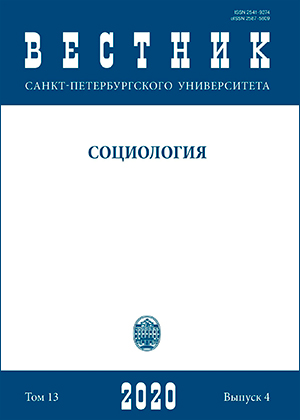Игровые стримы и летсплеи: перспективы социологического анализа
DOI:
https://doi.org/10.21638/spbu12.2020.407Аннотация
Дан обзор исследований, посвященных популярной практике просмотра игровых стримов и летсплеев. Цель — наметить «точки роста» социологической аналитики нового поля. Стримы и летсплеи разделяются по признаку онлайн- и офлайн-коммуникации: стримы создаются и показываются синхронно онлайн, а летсплеи записываются и монтируются офлайн с последующим размещением для просмотра. Сегодня обе эти разновидности видео интегрированы в индустрию компьютерных игр, а зарождение комментариев для публики происходило еще в телевизионных шоу. По результатам изучения стримов и летсплеев можно говорить об их социальной структуре — ведущей роли комментатора-игрока и складывающегося вокруг его канала сообщества. Текст компьютерной игры хотя и служит основанием для комментариев, но все же не исчерпывает всей
тематики коммуникации между стримером/летсплейщиком и группой зрителей. Аналитики высказывают мнение, что комментирование есть форма сопротивления колонизации мышления посредством цифровых медиа, видя здесь отказ от прямого потребления компьютерной игры. Содержание комментариев и обсуждений часто отражает не только игровой опыт, но и текущую повестку дня — политику, экономику, популярную культуру. Так, наиболее востребованные стримеры/летсплейщики становятся лидерами мнений, их статус сравним с положением других медиа-знаменитостей, находящихся в центре парасоциальных отношений. Зрители игровых стримов и летсплеев формируют онлайн-сообщества, объединенные общими интересами, навыками и знаниями. Погруженность в одну информационную среду, понимание ее языка и других символов
укрепляют ощущение принадлежности к группе «своих». Вклад автора статьи заключается в систематизации исследовательского опыта по проблематике социальных аспектов комментирования компьютерных игр, а также в обосновании социологического подхода к данной практике как пространству жизни новых коллективов.
Ключевые слова:
компьютерные игры, стримы, летсплеи, онлайн-сообщества
Скачивания
Библиографические ссылки
References
Загрузки
Опубликован
Как цитировать
Выпуск
Раздел
Лицензия
Статьи журнала «Вестник Санкт-Петербургского университета. Социология» находятся в открытом доступе и распространяются в соответствии с условиями Лицензионного Договора с Санкт-Петербургским государственным университетом, который бесплатно предоставляет авторам неограниченное распространение и самостоятельное архивирование.




